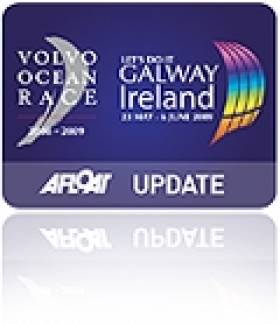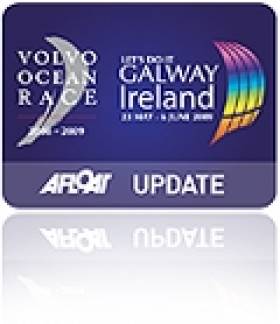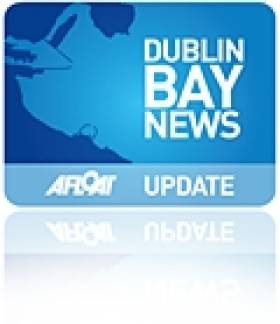Displaying items by tag: Entertainment
No Red Arrows for VOR Galway
#VOLVO OCEAN RACE - Red Arrow jets will not be returning to the skies over Galway Bay when it hosts the Volvo Ocean Race finale this summer, the Galway Sentinel reports.
The Royal Air Force (RAF) has turned down a request by event organisers to bring its aerobatic display to the City of the Tribes citing 'operational reasons'.
It is understood that the RAF is reducing the number of Red Arrows performances this year due to a shortage of pilots trained to do air displays.
The Red Arrows flyover was one of the highlights of Galway's 2009 hosting of the yacht race.
However, their proposed return was opposed by anti-war campaigners the Galway Alliance Against War, who issued a statement last week declaring the the RAF and another "war outfit" were lined up as entertainment for the race week.
The Galway Sentinel has more on the story HERE.
Galway's 2012 VOR Stopover Will Be 'Bigger and Better'
#VOLVO OCEAN RACE - Organisers for next year's Volvo Ocean Race stopover in Galway have promised the event will be "bigger and better" than the previous race visit in 2009.
John Killeen, president of Let's Do It Galway, told the Galway Independent that he expects as many as 8,000 foreign visitors to the City of the Tribes next July.
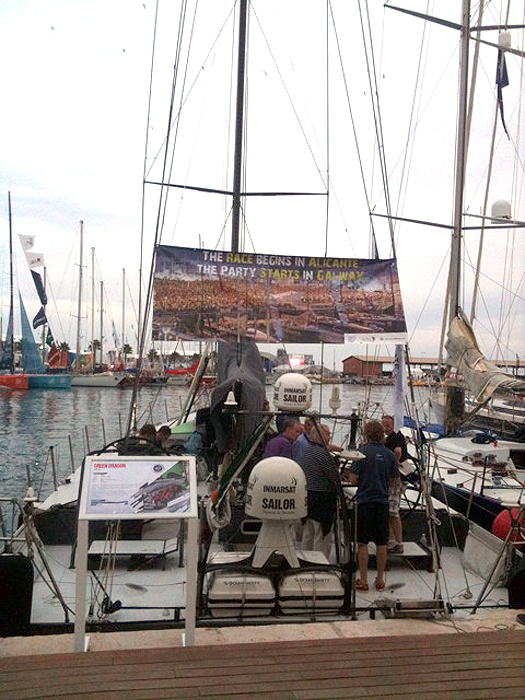
Green Dragon on show in Alicante this week – her dockside poster reads: 'the race begins in Alicante, the party starts in Galway'
Killeen is in Alicante on the Spanish Mediterranean for the week of events and in-port races leading up to the official start of the 2011-12 Volvo Ocean Race this Saturday.
The race is set to finish in Galway on Tuesday 3 July 2012, attracting the world's media to Ireland's fifth largest city for the final prize-giving.
Nimmo's Pier will be the focus of entertainment facilities for the many thousands expected to throng the city as the six competing yachts complete their epic challenge.
"It’s a rare opportunity for Galway and Ireland to have the leverage of such an event and, if we don’t [use it to benefit Galway], it will be remissible,” said Killeen.
The Galway Independent has more on the story HERE.
Ireland's Kitesurfers Headed to Wexford Fest
The Irish National Kite Surfing Festival will be part of the action at the Wexford Kite Surfing Festvial in Duncannon next weekend.
Kitesurfers from all over Ireland will compete in course racing and a freestyle competition in their bid to claim the national championship.
But the two day event also offers entertainment for all the family, from archery and bungee trampolines for the more adventurous to face painting, hula hoops and bouncy castles for the young - and young at heart.
The Royal St George Yacht Club has described the entertainment package for the upcoming International Match Racing Challenge as "value for money".
As reported Friday on Afloat.ie, the club is charging €200 for its 'hot seat' package, which will put yacht racing fans on board with a team "experiencing the thrills and tension of the race as it happens along with the competitors".
But the RSGYC has pointed out that the package, while expensive, works out as good value.
"We are very conscious of asking anyone to pay for anything but the package includes a lot - lunch, dinner, drinks, sailing, hot seat sailing, goodie bag, embroidered gear, etc," said RSGYC marketing and events co-ordinator Sonja Lee. "It is expensive but personally I feel it's value for money."
She added: "The feedback from last year’s hot seaters was excellent and quite a few are coming back this year. Nobody complained or felt it was bad value. Pricing is on a par with other 'corporate days'."
The 'hot seat package' includes a meet-and-greet in the clubhouse, a race briefing and a yacht trip around Dublin Bay as well as the hot seat race with a competing crew. Lunch and a post-race barbecue and drinks are also provided.
Meanwhile, the similarly specced 'pure spectator' package for €100 replaces the hot seat race with the chance to fire the starting gun for one of the weekend's races.
Further details are available on the RSGYC website.
Match Racing Challenge Hot Seat a Pricey Gift
You could be in the hot seat at next month's International Match Racing Challenge - provided you'e got €200 to spend.
The top-level entertainment package for the Royal St George Yacht Club's second annual event, set for the weekend of 23-24 July, will put yacht racing fans on board with a team "experiencing the thrills and tension of the race as it happens along with the competitors".
A spectator package - which will set fans back €100 - gives a bird's-eye view of all the racing in Scotsman's Bay "as well as the added bonus of firing the starting gun", according to the RSGYC.
The second International Match Race Challenge will see Ireland’s top six match racing teams go head to head against a world team consisting of six international crews from France, Germany, Australia, New Zealand and the UK. Ireland will be hoping to avenge their 36-29 loss to the world at last year's inaugural event.
Match racing involves head-to-head racing between two identical boats over short 20 minute courses, with each boat having four crew members. At the end of the competition and after approximately 90 races, there will be an overall individual winner. In addition, the combined scores of the six Irish teams and the six international teams will deliver an overall team winner.
Package One
THE HOT SEAT
€200 per person
Experience the thrills and tension of the race as it happens aboard!
12:00 Meet and Greet in Club
12:30 Race Briefing and Intro to the Event
12:45 Light Lunch
13:30 Trip on Yacht around Dublin Bay
14:30 Arrive at Spectator area to watch racing
15:00 Hot Seat Race
16:15 Return to shore
16:30 BBQ and Drinks
Hot Seaters need to be prepared to get wet and be active!
Package Two
PURE SPECTATOR
€100 per person
Get a Bird's Eye view of all the action!
12:00 Meet and Greet in Club
12:30 Race Briefing and Intro to the Event
12:45 Light Lunch
13:30 Trip on Yacht around Dublin Bay
14:30 Arrive at Spectator area to watch racing
15:00 Step on Board the Starter's Boat and fire the Starting Gun
16:00 Return to shore
16:30 BBQ and Drinks
Just One Week To Go Till Red Bull Flugtag
The Red Bull Flugtag celebrates its 100th event in Dun Laoghaire next Sunday, and organisers have posted details for spectators planning to spend the day cheering on those magnificent flying machines!
The site for the free event will open at 12 noon, with the show taking place from 1pm till 4.30pm. All public access to the event site is via Dun Laoghaire Harbour/East Pier beside the National Yacht Club (the viewing area for those with disabilities is on Carlisle Pier beside the Royal St George).
There are a number of road diversions and parking restrictions to be aware of, full details of which are listed HERE. Temporary signage will advise motorists of impending diversions, and there is ample parking available at the Pavilion, Bloomfields and the IMC cinemas.
Visitors can also arrive by public transport, with bus routes 7, 7a, 46a, 75 and 111 all running to Dun Laoghaire. DART services will also run every 30 minutes and extra capacity will be provided.
The organisers wish to remind all spectators that the Red Bull Flugtag is a family event, and the consumption of alcohol in public will not be permitted.
Watch the world flugtag record being set in Minnesota last year. Maybe a new one will be set in Dun Laoghaire next weekend?
Dublin To Host 100th Red Bull Flugtag
The Red Bull Flugtag will celebrate its 100th event when it comes back to Dublin this summer.
Twenty years on from the first flugtag in Austria, this year's contest promises an "Irish twist" on the formula, whereby homemade flying machines shoot off a 30-foot deck in the vain hope of not splashing into the water below.
Budding pilots will take their creative flying contraptions to Dun Laoghaire on 22 May for a day of entertainment and spectacle for all ages.
Organisers are hoping for "plenty of the outrageous and innovative machines for which the Red Bull Flugtag has become famous - and who knows, maybe we'll get a world record to round off what we hope will be the perfect event!"
For more details visit the Red Bull Flugtag Dublin 2011 Facebook page HERE.


























